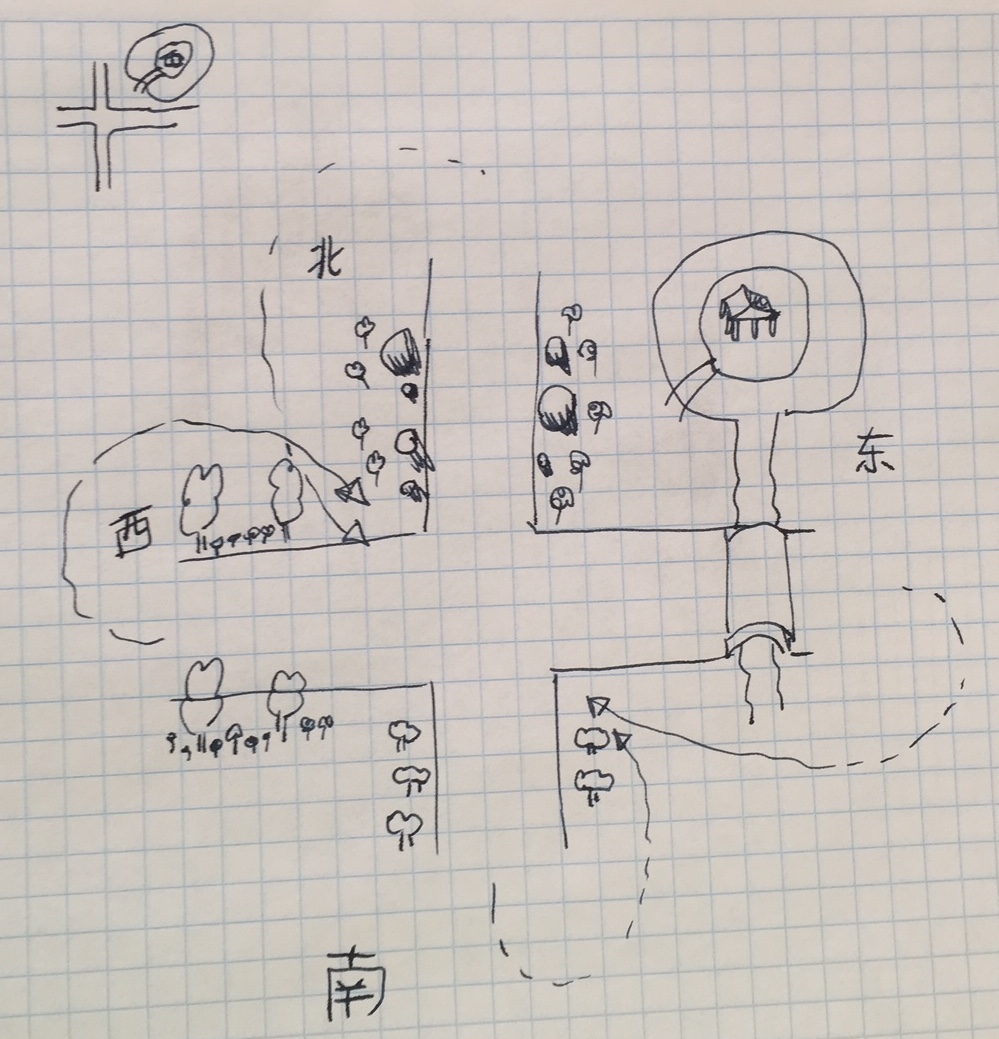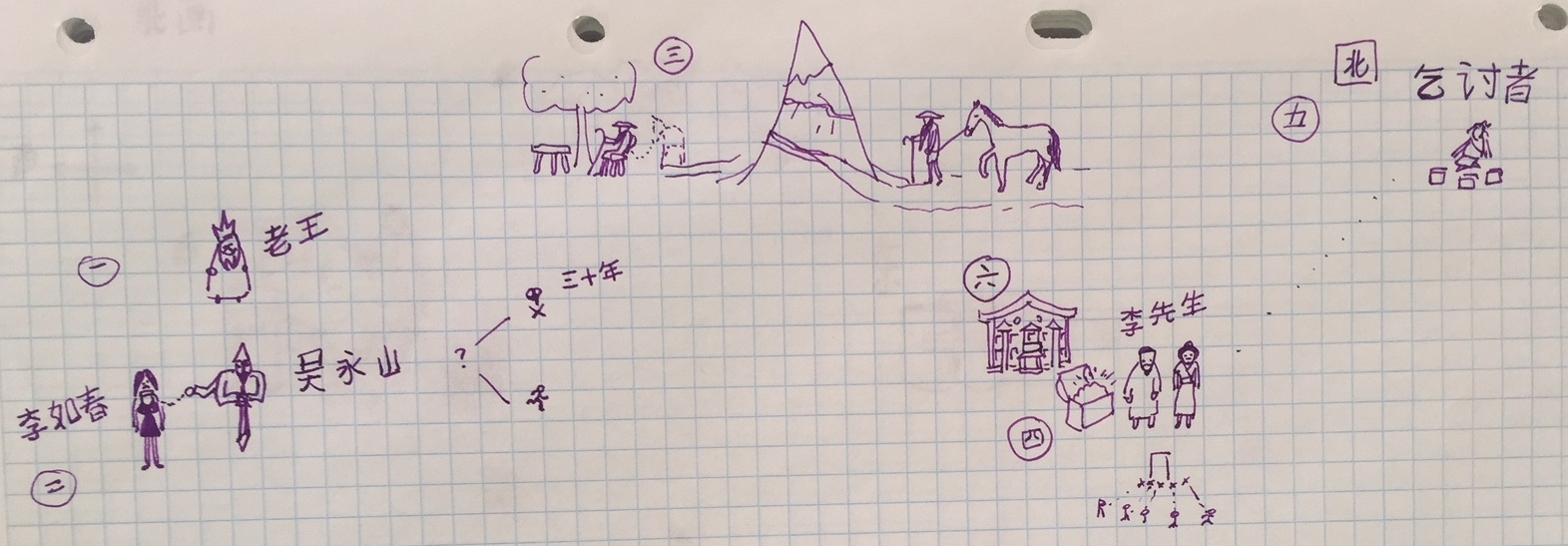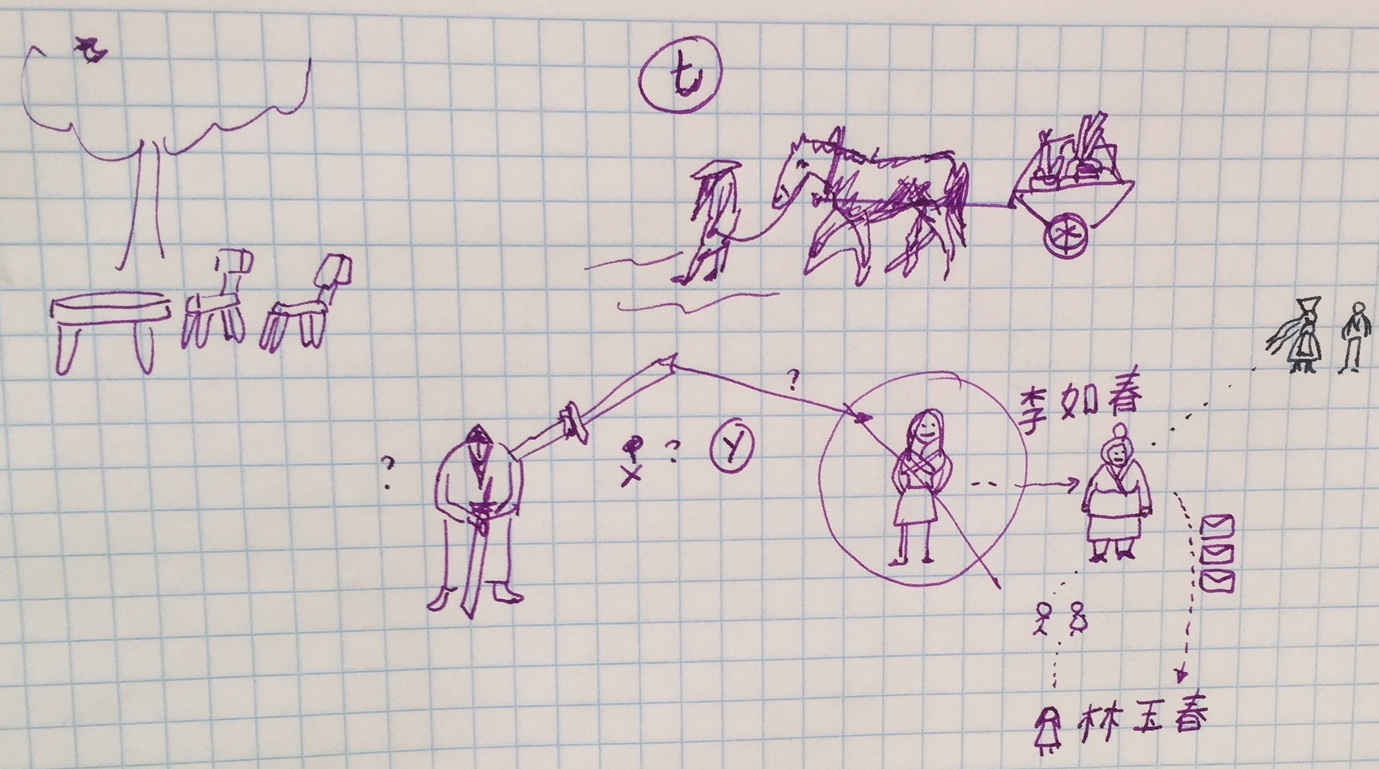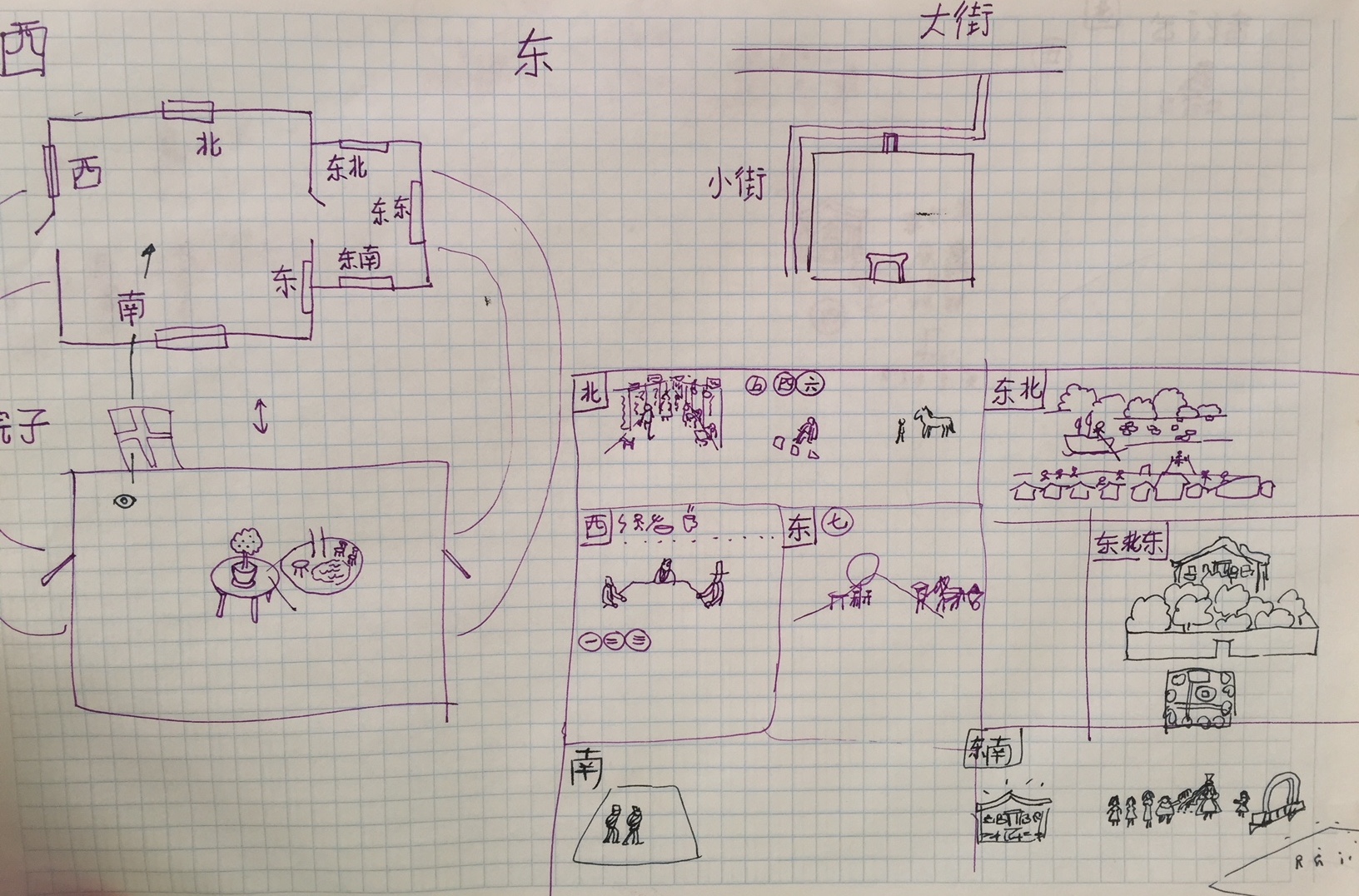Our text adventure games often involve walking around and exploring the world described for you by the Chinese text. Remembering where you’ve been and how to get around can get tricky, particularly given we don’t provide a map.
But not providing a map is by design. Olle and I discussed this at length and reached the conclusion that not providing a map has sufficient pedagogical value to offset the added challenge. But there’s nothing to stop you from drawing your own. And indeed we highly recommend this!
A number of students have written to us to share the maps they have drawn. Here we’d like to share some of these with you, with the hope that if you haven’t tried drawing your own maps, taking notes on the story, or even illustrating it, you be inspired to give it a try.
This map, shared by Shannon, illustrates the sewer portion of our game, Into the Haze:

If you’ve played this game, take a moment to see if you can recognize aspects of the game in this map. In addition to mapping the connectivity of the scenes, which will help you remember how to get around, this map also includes important information about where to get resources and where dangers lie, as well as elements from the scene description.
The above map is annotated in Chinese, though if that’s an obstacle, you could annotate it with pictures, like Andrei has done in his illustrations for The Magistrate's Gallery:

This map above describes the scene inside the painting of a garden.
In addition to drawing geographic maps, you might also find it valuable to take notes on the story. And if you like drawing, it might even help to try illustrating parts you remember, like in this set of drawings:

And don’t worry, these drawings are for your own benefit, so you don’t need to be a great artist. Though I must say Andrei has done a very nice job rendering aspects of this story.
Pedagogical value?
There are a broad range of pedagogical benefits to drawing maps and illustrating parts of the story.
- Turning a potentially vague understanding of the scene into something concrete, like a drawing, helps you identify what you really understand and encourages you to look again when you realize you are unsure of some detail. This process can greatly enrich how much Chinese you learn and retain, much like teaching something can greatly solidify the concepts in your mind.
- Having a map of the game makes for more efficient gameplay, allowing you to spend less time heading down wrong paths or making the same mistakes again. More efficient gameplay enables you to spend more time exploring parts of the game you haven’t seen before and results in more varied language practice.
- Language learning can be frustrating enough as it is. Add to that a complicated game where what is possible often depends on choices you made earlier in the game, and it might be tempting to throw up your hands and give up. But armed with a map and the confidence that building it yourself can nurture, you will probably be much less frustrated, and the quality of your practice that much greater.
Here are some more of Andrei’s illustrations for The Magistrate’s Gallery:



Can you recognize these scenes from the game?
Finally I’d like to thank Shannon and Andrei for sharing their maps and allowing us to feature them in a blog post. If you have your own maps to share, we’d love to see them!
If you haven’t tried mapping or illustrating your adventure, we encourage you to give it a go.